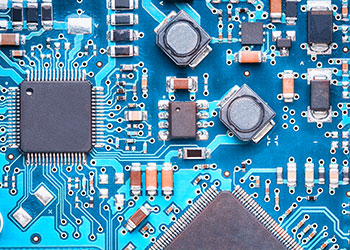At present, wave soldering is usually composed of PCB board mounting system, flux coating system, preheating system, welding system, electrical and mechanical structure system.
Wave soldering principle and structure composition
1. PCB board loading system
It is mainly composed of track, which can be mechanically or electrically controlled. The welded PCB can run smoothly on the track.

2. Flux coating system
The common methods of spraying flux on PCB include foaming agent, spray, etc.
3. Preheating system
Preheating PCB components, high temperature can make the solvent in the flux volatilize quickly and activate the flux, so as to remove the positive oxide layer on the pcb pad and components' welding ends, and lay the foundation for high reliability welding.
4. Welding system
The welding system is one of the most critical parts of the wave soldering machine and an important part of the completed welding operation. The basic principle of wave soldering is to catch the stirring action of the pump in the solder groove, form the molten liquid solder into a wave soldering with a specific shape, insert the PCB with components onto the conveyor belt, and pass through the solder wave crest through a specific angle and a certain immersion depth to realize welding. The early wave soldering machine had only one outlet, called single wave soldering machine. At present, the wave soldering machine used has two outlets, also called double wave soldering machine. The tin wave shape of the previous outlet of the double wave soldering machine is pulse upward. Its purpose is to make the solder joint rapidly heat up, and at the same time make the solder impact the pad with components in the vertical direction, but no reliable solder joint has been formed at this time, The shape of the tin wave of the last discharge port of the double-wave flux is relatively flat, the solder joint is more evenly heated in the flat tin wave, and the solder is fully wetted, thus forming a more reliable solder joint. Early flat waves have different waveforms, some of which are like Greek letters λ,be called λ Wave, his waveform is flat and open; Some waveforms are like the Greek letter Ω, called Ω wave. The Ω wave is mainly a vibration source installed in the solder outlet, which causes small amplitude vibration on the tin foil surface. Its vibration can increase the welding function, make the solder wet the component pins, and effectively solve the problem of welding dead zone. However, the effect is not obvious when the density is too high or the difference between the high and low parts is large. There are also bubbles in the discharge port of the wave soldering machine, so it is also called bubble tin wave. His principle is to inject air or nitrogen into the tin pot from the bottom of the tin bath, and produce a tin wave containing countless small bubbles. These bubbles float up with the solder and have high kinetic energy, thus dispersing the surrounding gas at the solder joint, making it easier for the solder to enter the pad.
Composition principle of wave soldering
The flat wave of the wave soldering machine currently used is to λ The main peak of the wave is shortened and the secondary peak is extended. Its characteristic is to make the wave peak very wide, so it is also called T wave, as shown in the figure. When the printed circuit boards passes through the T-shaped wave peak, the solder wets the welding area of the printed board, forming a solder joint. The hesitation solder peak is very wide, and the welding time can be guaranteed. The solder surface tension has sufficient time to completely drag the excess solder back to the peak surface, reducing the bridging phenomenon. In some wave soldering machines, a hot air knife is installed behind the wave crest. The high temperature hot air can effectively remove the solder joint bridging and reduce the thermal stress of the components. The PCB quickly enters the cooling zone after wave soldering/hot air knife. At this time, a cooling fan is installed in the wave soldering machine to ensure PCB cooling to reduce the damage caused by heat retention.
5. Electrical and mechanical structure system
The electrical and mechanical structure system is the guarantee for the effective operation of the above systems. The wave soldering machine with high performance has stable operation, quantitative control and high precision. For example, the preheating temperature and the tin pot temperature can reach ± 1 ℃. In addition, the rail width, inclination, the depth of the solder joint in the tin wave and the dwell time can be controlled quantitatively. In the wave soldering machine, the main station is the welding system, that is, the solder wave and PCB contact station, and the rest are auxiliary stations, but the wave soldering machine is a whole, and the auxiliary stations are indispensable or damaged on the PCB board.